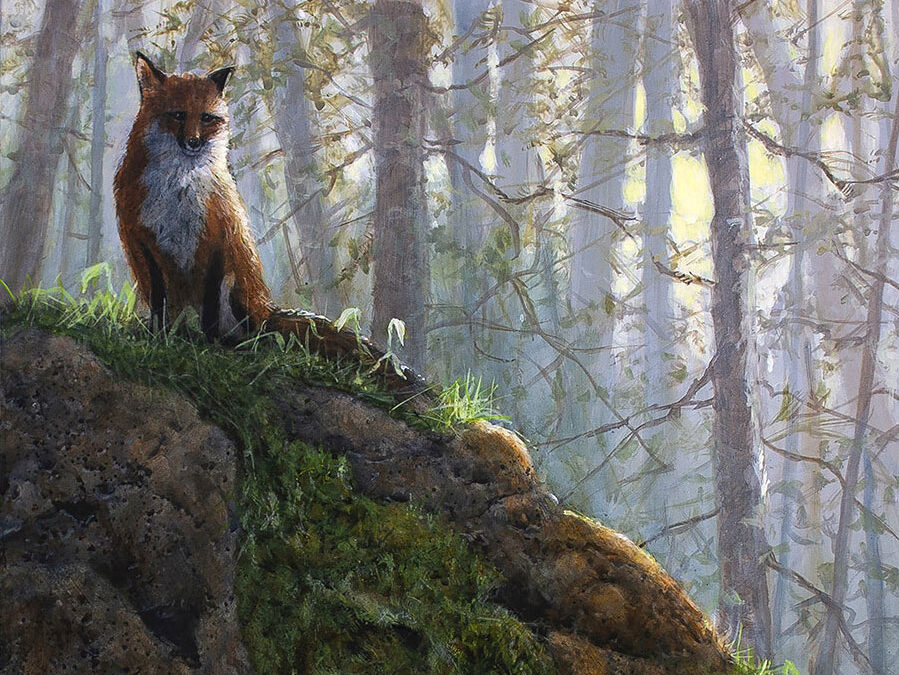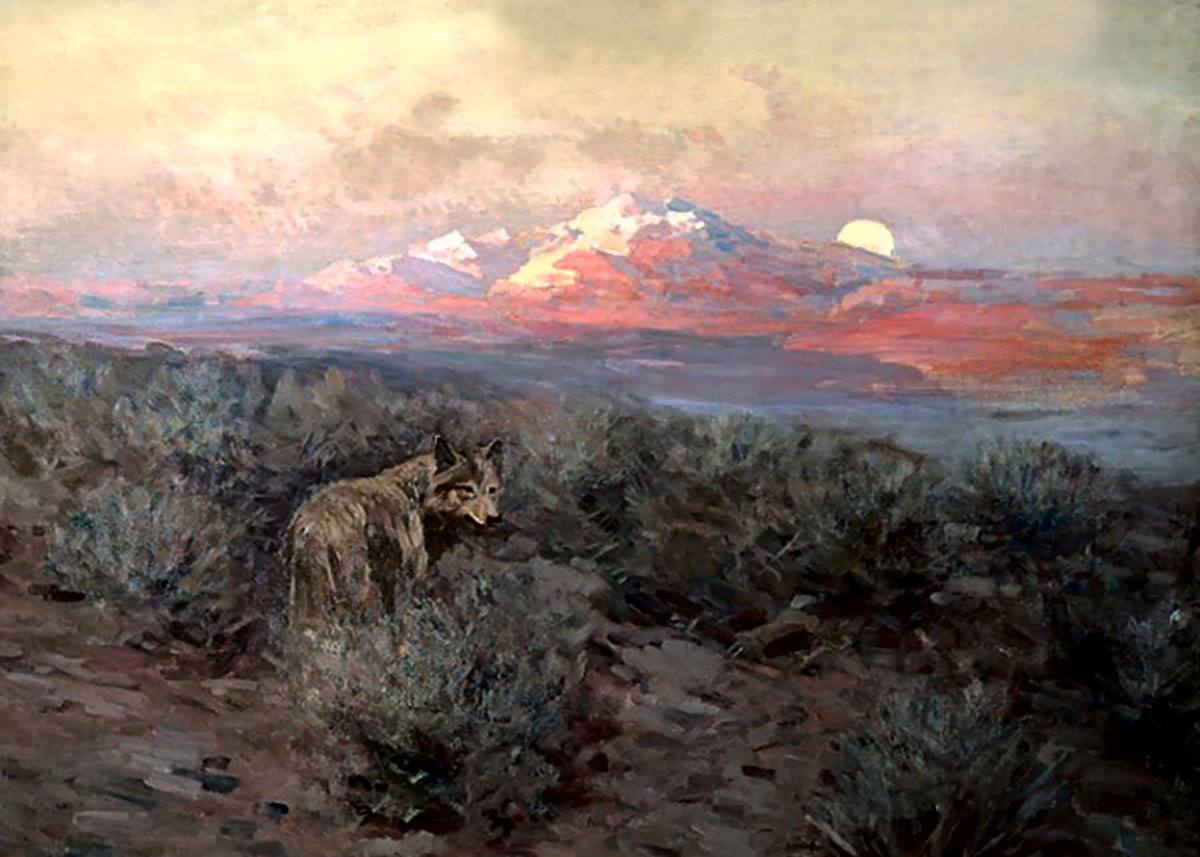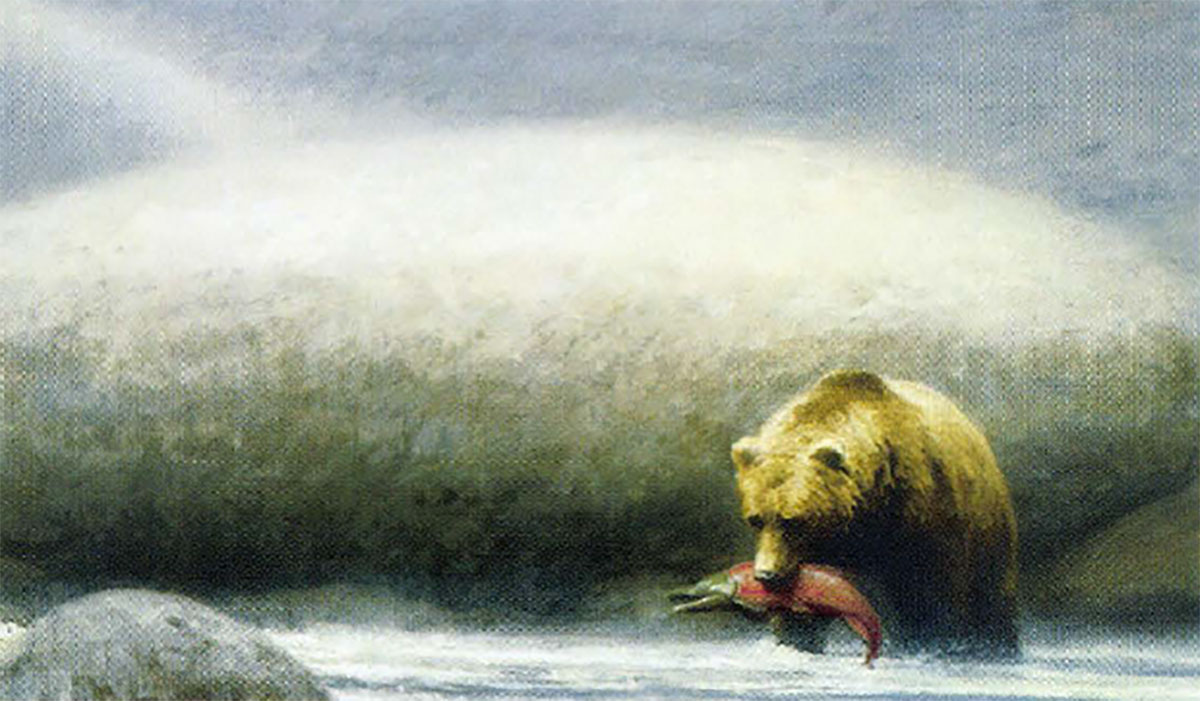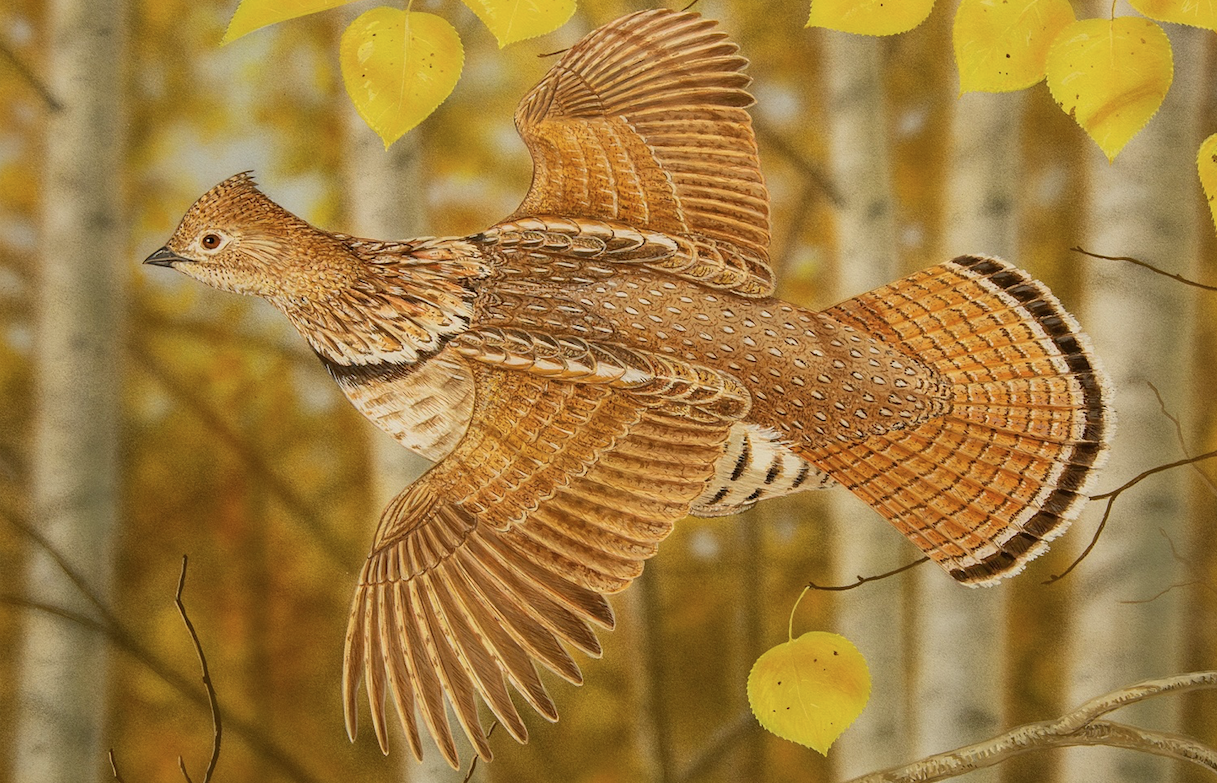For Suzie Seerry-Lester, painting has always been her release; her refuge. The process of painting is what fuels her, not the finished piece.
Ever-so-gently, I graze my left index finger across the roseate spoonbill’s extended primary feather, as translucent as rose-tinted stained glass against the backdrop of the bay flats on which it feeds, and feel an electric thrill pulse from my fingertip to my heart.
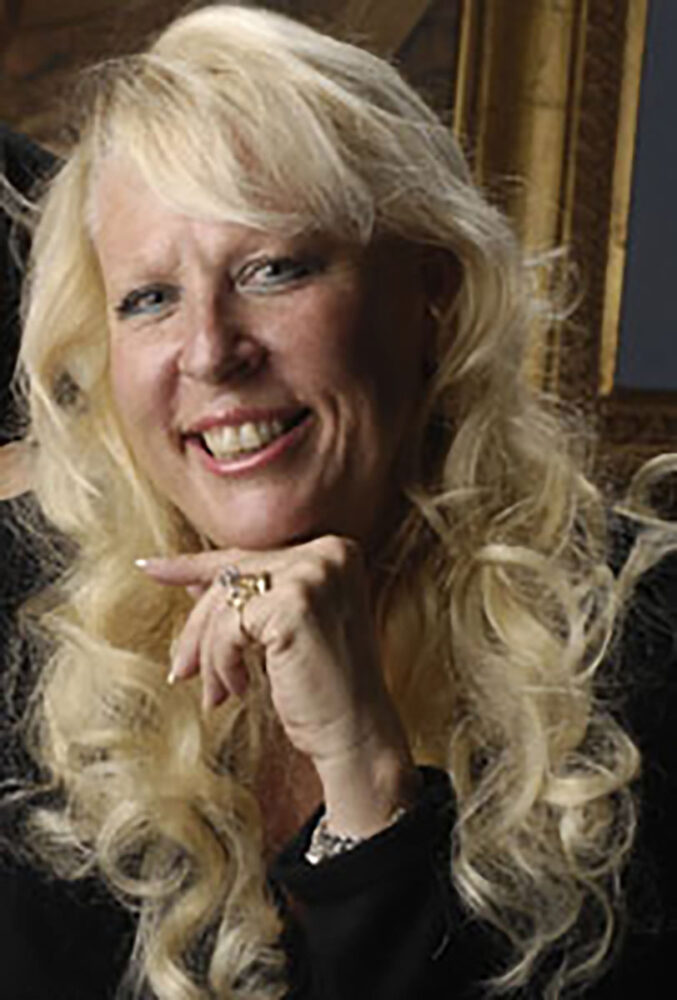 Its spatulate bill is poised just above the surface, while the bills of the three roseates trailing it — a second adult and two juveniles — stir up foamy frills of saltwater as they greedily swish their spoon-shaped bills in the shallows, seeking small invertebrates, crustaceans and fish. The birds’ reflections undulate like a funhouse looking-glass on the otherwise placid bay. The gauzy horizon is misty and ethereal, with delicate cumulous clouds mirrored in the bay below and a near seamless union of sea and sky joining the two. Although a haze hangs over the water, the birds glow with luminescent light. Anyone who’s seen that light on the Gulf Coast knows it.
Its spatulate bill is poised just above the surface, while the bills of the three roseates trailing it — a second adult and two juveniles — stir up foamy frills of saltwater as they greedily swish their spoon-shaped bills in the shallows, seeking small invertebrates, crustaceans and fish. The birds’ reflections undulate like a funhouse looking-glass on the otherwise placid bay. The gauzy horizon is misty and ethereal, with delicate cumulous clouds mirrored in the bay below and a near seamless union of sea and sky joining the two. Although a haze hangs over the water, the birds glow with luminescent light. Anyone who’s seen that light on the Gulf Coast knows it.
This is not a real spoonbill I’m touching, of course, just a very real painting.
I’ve driven more than 150 miles of Texas Hill Country road just to see it, after speaking with its creator, Suzie Seerey-Lester, the day before. Suzie, who resides in Osprey, Florida — where she made a home with her late husband, John Seerey-Lester — shared my love of roseate spoonbills. This magnificent creature was driven to the brink of extinction during the plume trade of the late 19th century, but since the early 20th century, has successfully recolonized along the entire Gulf Coast. It’s a totem bird for her, as it is for me.
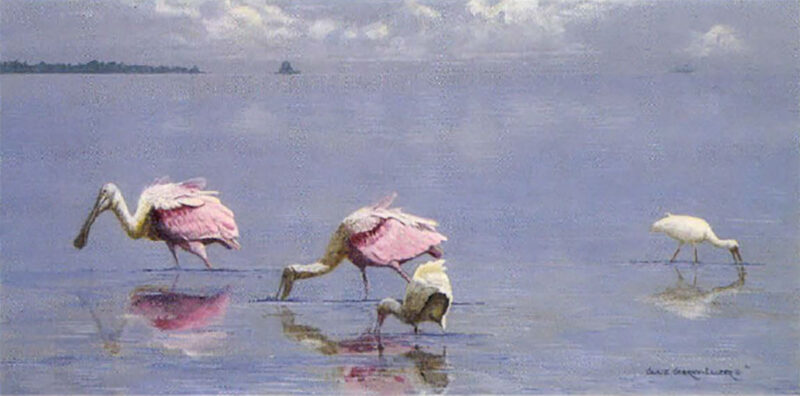
Reflections in Nature
This roseate painting, Reflections in Nature, shares gallery space with another of Suzie’s works, Morning Assembly, a grouping of gulls on the roof of a weathered barn, at the In Sight Gallery in Fredericksburg, Texas. The gallery is owned by Shannon and Thad Hanna (son of celebrated Texas wildlife artist John Austin Hanna), along with Shannon’s sister, Meredith Plesko and her husband, David. Though it opened last year, In Sight already shows every hallmark of a destination gallery.
These are but two paintings in a prolific body of work that for Suzie was first a stress-relieving hobby before propelling her down her destiny’s path to becoming a full-time painter and to meeting and marrying her soul mate.
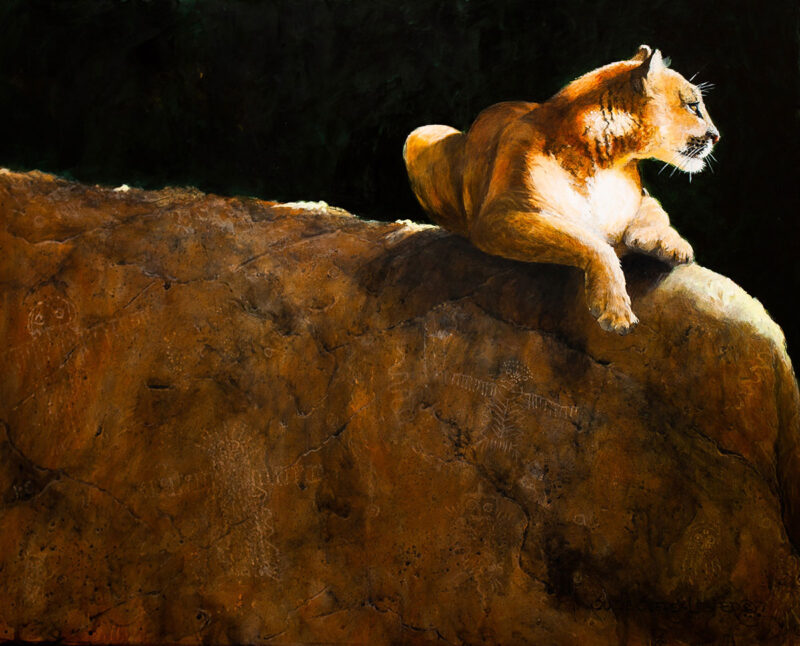
Shadows of the past
Flashback to the early ’70s: A young, willowy, athletic blonde with a warm, deep laugh and an innate sense of her own authority stands in a full-body wetsuit before a group of men. The men are President Gerald Ford’s Secret Service cadre, and the woman is Suzie. She — as a certified instructor for the CIA — is teaching them SCUBA diving prior to Ford’s Bermuda vacation, so they can guard him effectively. Suzie was employed by the CIA (“where I did things I never did, in places I’ve never been, with people who don’t exist,” she claims with her signature mountain-brook-tumbling-over rocks laugh) as the youngest-ever female diving instructor in the CIA at the time. In addition to the CIA and Secret Service, she SCUBA-certified FBI, Park Police, Navy Seals and Army divers — proving herself, and her physical strength and mental toughness in a truly male dominated world while remaining true to her own feminine graces.
Then and now, painting has always been her release; her refuge. The process of painting is what fuels her, not the finished piece.
“I’m not interested in hanging on to my paintings after they’re done,” Suzie confesses. “The joy for me is to witness that moment and somehow put it on canvas. Photographs lie; they cannot always communicate what we actually see.”
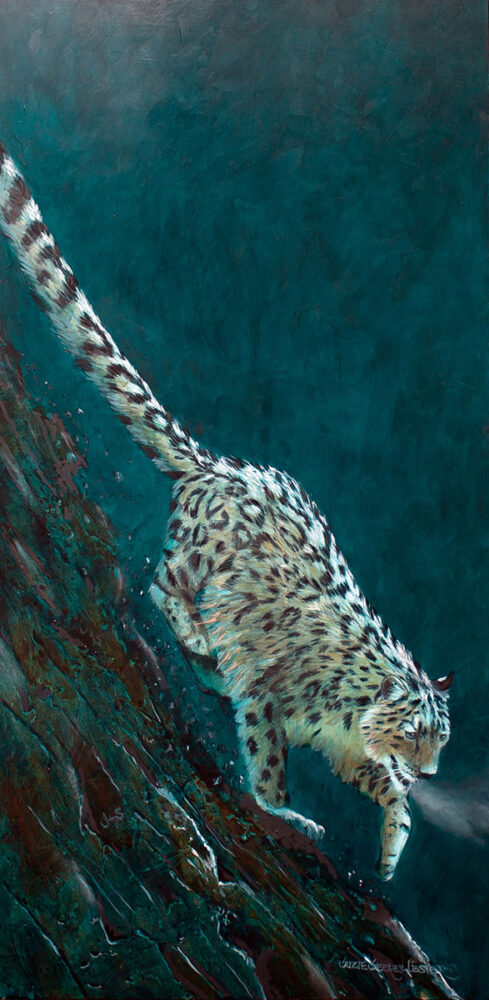
Leap of Faith
When her CIA work began to become rather mundane (guarding “safe houses” in undisclosed locations all over the world can get pretty boring, she says), Suzie went to work in the private sector, continuing with her vocational passion for writing manuals, training people and her passionate avocation, painting.
“In the nineties, when I was working for DHL as a regional manager with a territory stretching from Arizona to Guam, I traveled a good deal but still kept taking art classes on the weekends,” Suzie recalls. “I felt I was getting better, and I knew I loved to paint.”
She signed up for a wildlife painting course in Guatemala in 1993. “It was a wilderness workshop,” she says, “and our instructor had us climb up trees at 4 a.m. to these little-bitty platforms where we would watch the rainforest canopy wake up. John shared a platform with me, and, side-by-side, we witnessed that amazing morning together, as the whole canopy awakened with life. I began to take classes from him, and we became best friends before falling in love.” (John and Suzie were married in 2000.)

Sky Dive
“We did everything together: we worked nearby each other in our in-home studios, taught, lectured, traveled. Creatively, we enhanced each other; we were together all the time, each spending nearly a hundred hours a week pursuing our passion.”
Painting was not the only passion John and Suzie shared: She is a Florida-certified loggerhead turtle researcher/rescuer and spends most mornings of six months each year cataloging activity on a two-mile stretch on Florida’s Casey Key. John often tagged along, three-legged stool and gear in tow, to sketch and paint en plein air as Suzie cataloged the daily travails of the loggerhead for Mote Marine Laboratory.
The Seerey-Lesters continued to travel extensively as well, teaching painting workshops around the country, such as the one sponsored by the Susan K. Black Foundation in DuBois, Wyoming, another at the Sonora Desert Museum in Tucson, and yet another at the DDD Game Farm in Kalispell, Montana, in addition to the Master’s Class they conducted in Venice, Florida. Suzie’s work has been sold in auctions at Christie’s and Sotheby’s in London, and she’s won numerous awards, including Artist of the Year from the Ocean Foundation.
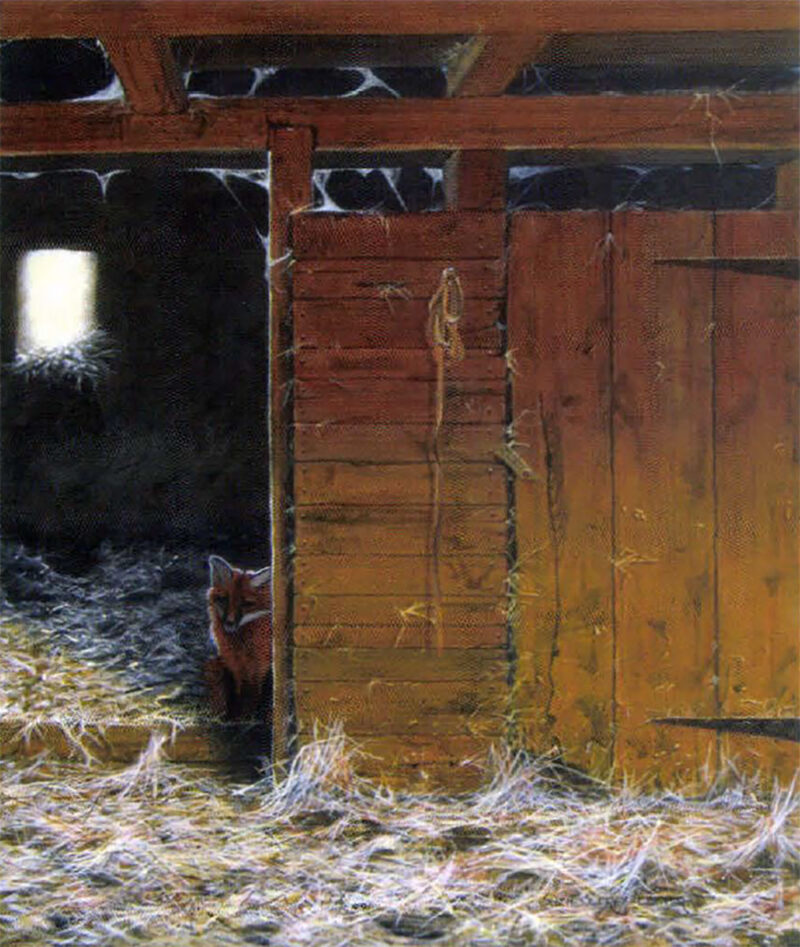
In Hiding Out
But it’s the experience of the times afield with John she loved the most, she tells me. “We enhanced each other’s creativity, often working more than ten hours a day, seven days a week in our home studios, but we were doing what we loved to do. I love being able to see bears and lions and such close up. Everything is a new experience, and we got to share it with each other.”
While John is deservedly revered internationally for his powerful, incredibly executed renderings of rare and exotic animals — “I fear that one day the only way to see exotic creatures may be in wildlife films or paintings like mine,” said John in a 2007 interview with Sarasota Magazine — Suzie celebrates the small, everyday moments around us that are every bit important. Little things, such as the incandescent, sun-shot neon-pink of four roseate spoonbills feeding on a hazy coastal flat in a palpable quality of light a camera’s lens could never record, but through Suzie’s spirit, eye and hand are forever distilled in one perfect, intimate split-second.
Editor’s Note: Suzie’s husband, John, died May 19, 2020, after a short battle with cancer. This is an updated version of the March/April 2010 issue of Sporting Classics.
 Finishing the final book in the iconic Legends series, Legendary Hunters and Explorers is the epitome of Sir John Seerey-Lester’s spirit. Filled with over 120 paintings and 45 descriptive chapters, the new 200-page book relives the compelling stories of 25 acclaimed hunters and explorers.
Finishing the final book in the iconic Legends series, Legendary Hunters and Explorers is the epitome of Sir John Seerey-Lester’s spirit. Filled with over 120 paintings and 45 descriptive chapters, the new 200-page book relives the compelling stories of 25 acclaimed hunters and explorers.
Amid his fight against cancer, Sir John Seerey-Lester was working tirelessly on his final book of the Legends series, Legendary Hunters and Explorers, when he passed away in May of 2020. He is survived by his wife and fellow artist, Suzie Seerey-Lester, who carries his torch with vigor and pride. Buy Now

